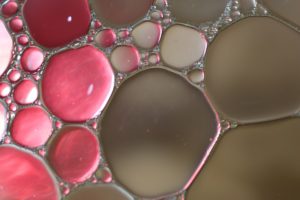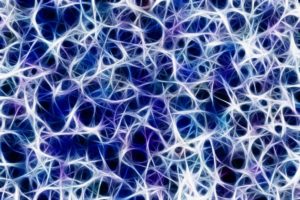Omega-3 Fatty Acids in Endometriosis

Omega-3 fatty acids are recommended for promoting health in endometriosis.
Omega-3 fatty acids, classified as polyunsaturated fats, play a crucial role in a healthy diet for endometriosis. With their anti-inflammatory properties, beneficial impact on hormone production, and support for the immune system, integrating them into regular consumption is highly recommended [1].
It is important to note that this should be achieved through natural sources rather than relying solely on “fish oil capsules.” Opt for nutrient-rich options like fatty sea fish and domestically sourced oils like rapeseed oil.
Understanding Omega-3 Fatty Acids
To comprehend the nature of omega-3 fatty acids, it is essential to grasp the diversity of fatty acids. All dietary fats consist of these components, which can be categorized into two fundamental groups:
- Saturated Fatty Acids
- Unsaturated Fatty Acids
Though this may appear intricate initially, it is pretty straightforward when considering their properties:
- Saturated fatty acids remain solid at room temperature.
- Unsaturated fatty acids are liquid.
Consequently, saturated fatty acids encompass sources like animal fats (such as bacon and butter) and certain plant-based fats (like palm oil and coconut oil). In contrast, unsaturated fatty acids are predominantly found in various vegetable oils.

Mehrfach ungesättigte Fettsäuren müssen mit der Ernährung aufgenommen werden.
Within the realm of unsaturated fatty acids, a notable distinction exists between:
- Monounsaturated Fatty Acids
- Polyunsaturated Fatty Acids
Monounsaturated fatty acids, exemplified by substances like olive or rapeseed oil, fall into the non-essential category. This signifies that they need not be obtained solely through diet, as the body can synthesize these fatty acids internally.
On the contrary, polyunsaturated fatty acids are indispensable, necessitating dietary intake. Omega-3 fatty acids and omega-6 fatty acids are encompassed within this category. Our primary focus in this context will be directed towards omega-3 fatty acids.
Adding a layer of complexity, there is not just a single omega-3 fatty acid; multiple variations exist. Among these, the most significant are:
- α-linolenic acid
- Docosahexaenoic acid (DHA)
- Eicosapentaenoic acid (EPA)
Among these, the widely recognized α-linolenic acid is primarily sourced from plants. Conversely, the other two – DHA and EPA – are predominantly found in fish, especially fatty fish like mackerel. An intriguing exception to this pattern is red algae, which also contains noteworthy amounts of DHA and EPA.
Impact of Omega-3 Fatty Acids on Endometriosis

Omega-3 fatty acids play a role in numerous metabolic processes.
The role of omega-3 fatty acids is both extensive and indispensable within the body, underscoring their vital importance. Ongoing research has illuminated their significance, revealing starkly reduced levels in individuals grappling with Alzheimer’s, dementia, cancer, depression, schizophrenia, and other mental conditions. Notably, a diet rich in omega-3 fatty acids has demonstrated a 22% decrease in the risk of endometriosis development [6].
Regarding the involvement of omega-3 fatty acids in endometriosis, it is pivotal to grasp their fundamental contributions to bodily processes. Within the context of endometriosis, the following functions of omega-3 fatty acids take center stage:
- Maintenance of Cellular Membrane Integrity
- Hormone production, including Prostaglandins
- Facilitation of Optimal Nervous System Function
- Reinforcement of the Immune System
- Anti-Inflammatory Properties
A deficiency in omega-3 fatty acids can lead to impaired growth and heightened infection vulnerability. Moreover, a shortage of these beneficial fatty acids correlates with an elevated risk of endometriosis development.
Noteworthy animal studies [2] have exhibited how omega-3 fatty acids, specifically DHA and EPA, can impede the growth of endometrial growths. In another investigation, an intriguing connection emerged – increased consumption of these omega-3 fatty acids, often in conjunction with vitamin B, showcased the potential for diminishing endometriosis-related pain [1]. However, it is vital to emphasize that this domain remains fertile ground for further exploration and research.
Why Omega-3 Fatty Acids Aid in Endometriosis Management?

Omega-3 fatty acids positively impact hormones and pain in individuals with endometriosis.
Omega-3 fatty acids profoundly influence endometriosis by their multifaceted capabilities, especially in modulating hormones and alleviating pain. Central to their impact is the harmonization of the body’s cytokine production—a class of substances governing immunity, inflammation, and cellular growth [4]. Notably, omega-3 fatty acids inhibit the activity of prostaglandins – a group of hormones catalyzing pain and inflammatory processes [3]. Since endometriosis lesions often spark inflammatory reactions in adjacent tissue, omega-3 fatty acids intervene positively. Simply put, a diet rich in omega-3 fatty acids reduces inflammation and pain emanating from endometriosis foci.
The dynamics of fatty acids – specifically the interplay between omega-6 fatty acids – bear substantial significance in the context of endometriosis.
However, navigating this terrain is not as straightforward. While the knowledge that omega-3 fatty acids hold the potential for mitigating endometriosis and other inflammatory conditions like arthritis is pivotal, it is merely the tip of the iceberg. An understanding of the intricate ratio between these fatty acids is imperative to harness the full scope of benefits. Specifically, the balance between omega-3 and omega-6 fatty acids takes center stage. This equilibrium is pivotal to unlocking the holistic health-enhancing potential of omega-3 fatty acids. The reason lies in the multifaceted properties of omega-6 fatty acids, which necessitate thoughtful consideration within the endometriosis context.
A specific omega-6 fatty acid, known as arachidonic acid, assumes a substantial role in generating hormones – prostaglandins – underpinning pain, inflammation, and blood clotting, among other functions [3]. Moreover, arachidonic acid contributes to estradiol synthesis, a hormone fostering growth and blood circulation within the uterine lining. However, an imbalance characterized by excessive intake of this prevalent omega-6 fatty acid leads to an augmented production of estradiol and prostaglandins—the outcome: amplified pain and heightened inflammation—a pivotal consideration to mitigate discomfort and distress.

Domestic oils, notably rapeseed, linseed, and walnut oil emerge as well-suited choices.
Nonetheless, omega-3 fatty acids harbor the capacity to counteract this adverse impact of omega-6 fatty acids in endometriosis. Therefore, achieving a harmonious equilibrium between these two types of fatty acids is pivotal. The ideal omega-3 to omega-6 ratio lies below 1:5; the greater the disparity in favor of omega-3, the better. Domestic oils emerge as commendable contenders in this quest for balance:
- Linseed oil (1:4)
- Rapeseed oil (1:2)
- Walnut oil (1:6)
Conversely, the oils that commonly grace kitchen shelves, buoyed by appealing marketing or affordability, do not align with their health portrayal:
- Olive oil (1:11)
- Corn oil (1:54)
- Sunflower oil (1:122)
Here, rapeseed oil is a wholesome substitute to inexpensive, less healthy options like sunflower oil – indeed, its benefits extend to endometriosis. Considering the potent impact of omega-3 fatty acids, they deserve a central role in culinary practices moving forward.
Regular Fish Consumption is Healthy

Reich an gesunden Omega-3 Fettsäuren: Sardinen
While vegetable oils like the recommended rapeseed oil mainly encompass α-linolenic acid, it is imperative to acknowledge the significant roles of the other two pivotal omega-3 fatty acids: DHA and EPA. This underscores the importance of including fish as a dietary staple. However, the misconception that costly salmon is the sole option is dispelled by alternatives like sardines, mackerel or herring – equally effective choices found in canned or refrigerated forms. It is worth noting that fish thriving in colder waters accumulate more healthy fats. Conversely, due to their habitat, tropical fish like pangasius or Victoria perch do not align well with the positive effects of omega-3 fatty acids. Regrettably, a cloud hands over sea fish due to heavy metal contamination. These toxins amass within the fatty tissues of aquatic creatures, disproportionately affecting fatty fish variants. Hence, while a weekly fish portion is healthy, frequent indulgence can pave the way for heavy metal buildup within the body.
Red Algae: A Vegan Alternative
For individuals following a vegan diet and abstaining from fish consumption, red algae offer a valuable solution. Varieties like lobster kelp are noteworthy sources, housing essential omega-3 fatty acids – DHA and EPA. Typically found in dried, crunchy flakes, these algae present a versatile addition to your culinary repertoire. They complement vegetables and soups as delectable toppings while also satisfying snack cravings.
CONCLUSION:
The impact of omega-3 fatty acids on endometriosis is undeniably significant – marked by reduced inflammation and pain. However, to fully harness the potential of omega-3 fatty acids, it is imperative to strike a balance by curbing excessive omega-6 fatty acid intake. Making strategic dietary swaps is crucial. Opting for rapeseed oil instead over sunflower oil and establishing a routine of consuming fatty fish or incorporating red algae forms a cornerstone in ensuring a robust omega-3 fatty acid supply. By embracing these adjustments, you pave the way for the comprehensive benefits of omega-3 fatty acids to flourish, fostering well-being and potentially easing the challenges posed by endometriosis.
References
- Finding the Perfect Nutritionist: A Step-by-Step Guide - 5. October 2023
- Does Monk’s Pepper Help with Endometriosis? - 5. October 2023
- A Brief Overview of Dietary Fats - 29. September 2023
